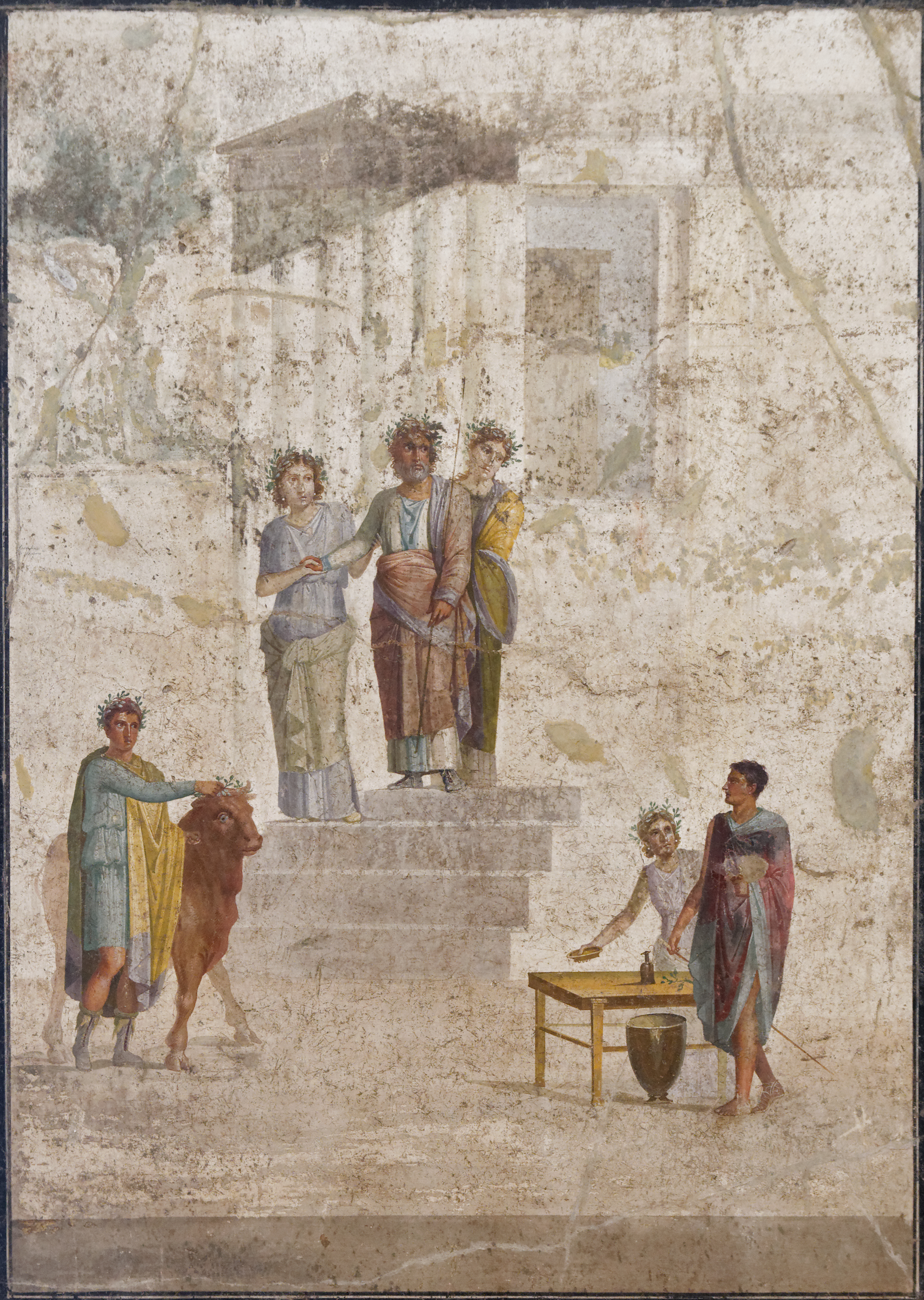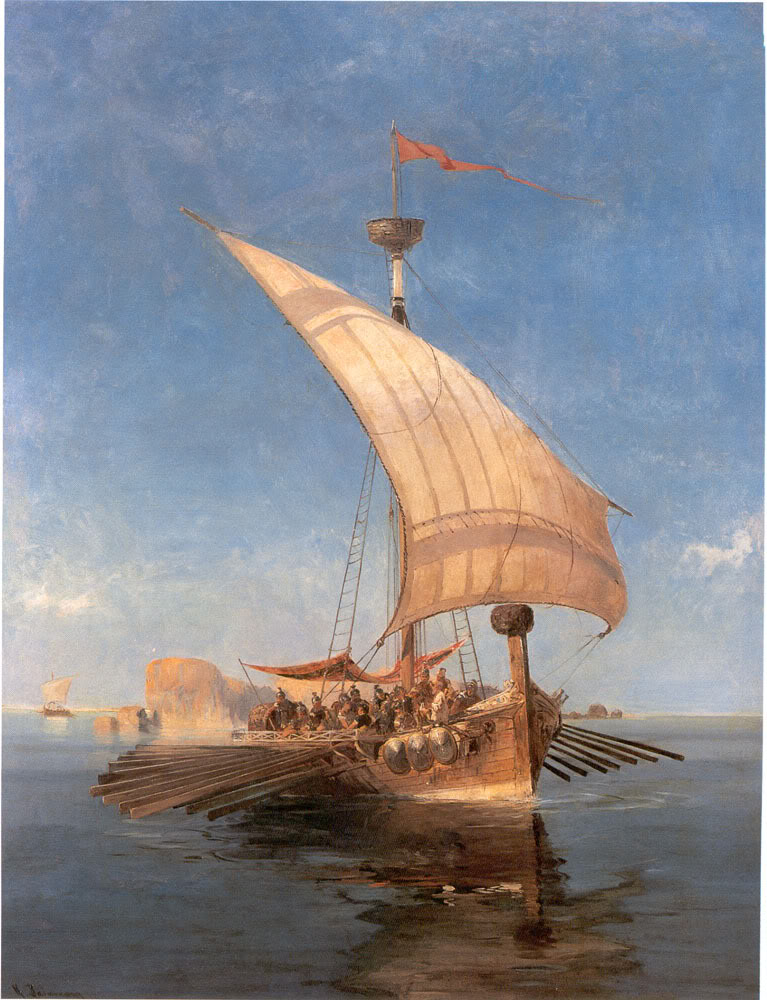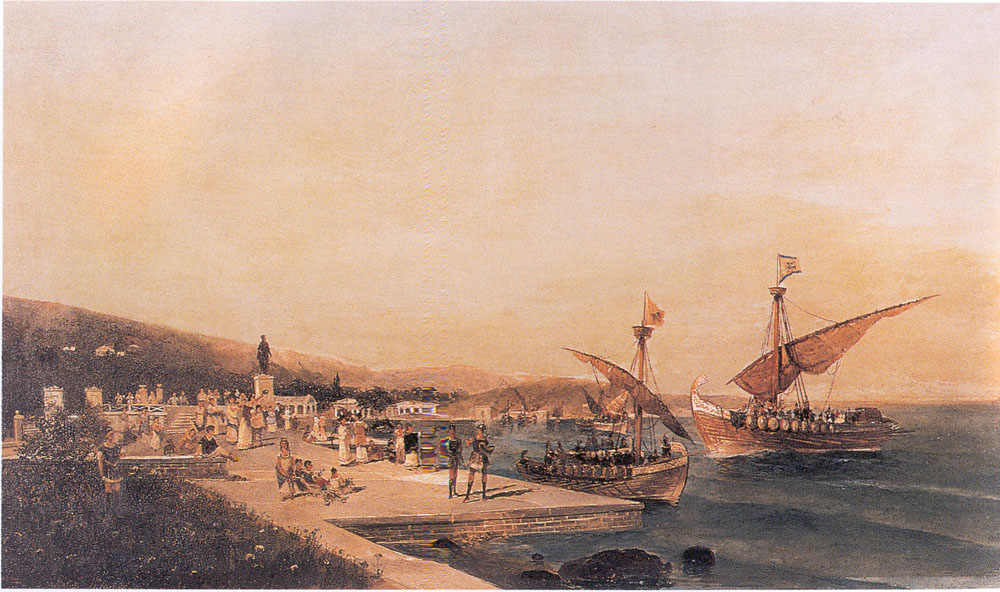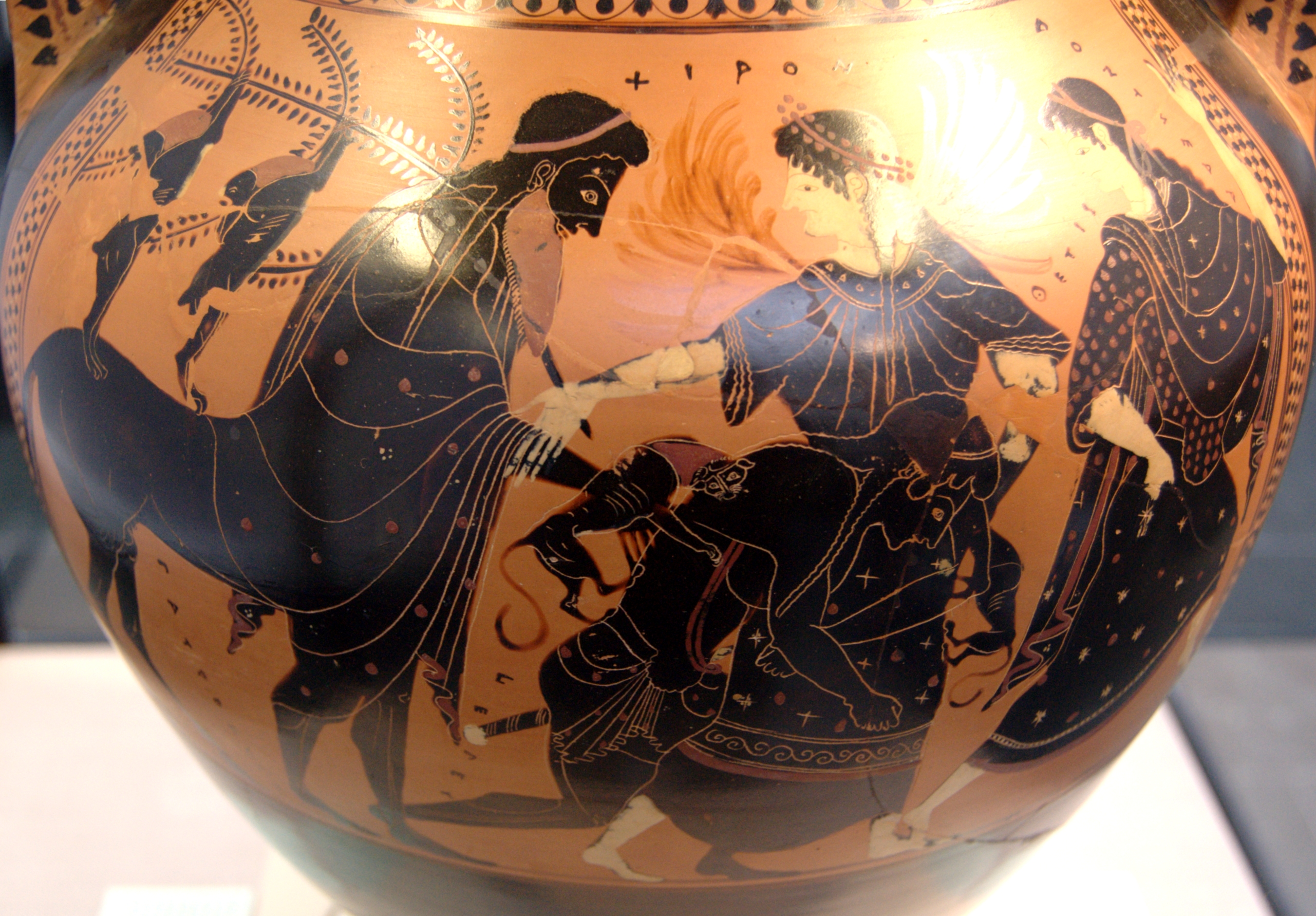|
Argonauts
The Argonauts ( ; ) were a band of heroes in Greek mythology, who in the years before the Trojan War (around 1300 BC) accompanied Jason to Colchis in his quest to find the Golden Fleece. Their name comes from their ship, ''Argo'', named after its builder, Argus (Argonaut), Argus. They were sometimes called Minyans, after a prehistoric tribe in the area. Mythology The Golden Fleece After the death of King Cretheus, the Aeolian Pelias usurped the throne from his half-brother Aeson and became king of Iolcus in ancient Thessaly, Thessaly (near the modern city of Volos). Because of this unlawful act, an oracle warned him that a descendant of Aeolus would seek revenge. Pelias put to death every prominent descendant of Aeolus he could, but spared Aeson because of the pleas of their mother Tyro. Instead, Pelias kept Aeson prisoner and forced him to renounce his inheritance. Aeson married Alcimede, who bore him a son named Jason. Pelias intended to kill the baby at once, but Alcimede ... [...More Info...] [...Related Items...] OR: [Wikipedia] [Google] [Baidu] |
Jason
Jason ( ; ) was an ancient Greek mythological hero and leader of the Argonauts, whose quest for the Golden Fleece is featured in Greek literature. He was the son of Aeson, the rightful king of Iolcos. He was married to the sorceress Medea, the granddaughter of the sungod Helios. Jason appeared in various literary works in the classical world of Greece and Rome, including the epic poem ''Argonautica'' and the tragedy '' Medea''. In the modern world, Jason has emerged as a character in various adaptations of his myths, such as the 1963 film '' Jason and the Argonauts'' and the 2000 TV miniseries of the same name. Persecution by Pelias Pelias (Aeson's half-brother) was power-hungry and sought to gain dominion over all of Thessaly. Pelias was the progeny of a union between their shared mother, Tyro ("high born Tyro"), the daughter of Salmoneus, and the sea god Poseidon. In a bitter feud, he overthrew Aeson (the rightful king), killing all the descendants of Aeson ... [...More Info...] [...Related Items...] OR: [Wikipedia] [Google] [Baidu] |
Argo
In Greek mythology, the ''Argo'' ( ; ) was the ship of Jason and the Argonauts. The ship was built with divine aid, and some ancient sources describe her as the first ship to sail the seas. The ''Argo'' carried the Argonauts on their quest for the Golden Fleece from Iolcos to Colchis. After the journey, the ship was retired and dedicated to Poseidon, the divine ruler of the seas. The ship has gone on to be used as a motif in a variety of sources beyond the original myth from books, films and more. Name Most accounts name the ship after her builder, Argus. The adjectival form is ''Argoan'' , from Greek ''Ἀργῶος'' through Latin ''Argōus''. Diodorus Siculus records that some thought the name was derived from an ancient Greek word for "swift" to indicate that the ship was designed to move quickly. Cicero, the Roman senator and orator, proposed that it was named after the Argives, a name for the Greek people of Argos in the Peloponnese that was commonly used by ... [...More Info...] [...Related Items...] OR: [Wikipedia] [Google] [Baidu] |
Argus (Argonaut)
In Greek mythology, Argus ( ; ) was the builder and eponym of the ship ''Argo'', and consequently one of the Argonauts; he was said to have constructed the ship under Athena's guidance. Argus was commissioned to build the Argo by King Pelias (ruler of Iolcus) so that the crew that would come to be known as the Argonauts could find and bring the Golden Fleece back to Iolcus, which was in Thessaly. Family Argus' parentage is debated, but most often he is referred to be the son of Arestor. The latter was a member of the Argive royal house, is given as his father by Apollonius Rhodius and John Tzetzes, but Hyginus says Argus' parents were Polybus and Argia or Danaus to be his father. Mythology In Valerius Flaccus' ''Argonautica'', Argus is said to have originated from Thespiae. Argus was also credited with creating a wooden statue of Hera that was a cult image in Tiryns. King Pelias did not believe that the crew would be able to come back with the Golden Fleece success ... [...More Info...] [...Related Items...] OR: [Wikipedia] [Google] [Baidu] |
Greek Mythology
Greek mythology is the body of myths originally told by the Ancient Greece, ancient Greeks, and a genre of ancient Greek folklore, today absorbed alongside Roman mythology into the broader designation of classical mythology. These stories concern the ancient Greek religion's view of the Cosmogony, origin and Cosmology#Metaphysical cosmology, nature of the world; the lives and activities of List of Greek deities, deities, Greek hero cult, heroes, and List of Greek mythological creatures, mythological creatures; and the origins and significance of the ancient Greeks' cult (religious practice), cult and ritual practices. Modern scholars study the myths to shed light on the religious and political institutions of ancient Greece, and to better understand the nature of mythmaking itself. The Greek myths were initially propagated in an oral tradition, oral-poetic tradition most likely by Minoan civilization, Minoan and Mycenaean Greece, Mycenaean singers starting in the 18th century&n ... [...More Info...] [...Related Items...] OR: [Wikipedia] [Google] [Baidu] |
Poseidon
Poseidon (; ) is one of the twelve Olympians in ancient Greek religion and mythology, presiding over the sea, storms, earthquakes and horses.Burkert 1985pp. 136–139 He was the protector of seafarers and the guardian of many Hellenic cities and colonies. In pre-Olympian Bronze Age Greece, Poseidon was venerated as a chief deity at Pylos and Thebes, with the cult title "earth shaker"; in the myths of isolated Arcadia, he is related to Demeter and Persephone and was venerated as a horse, and as a god of the waters.Seneca quaest. Nat. VI 6 :Nilsson Vol I p.450 Poseidon maintained both associations among most Greeks: he was regarded as the tamer or father of horses, who, with a strike of his trident, created springs (the terms for horses and springs are related in the Greek language).Nilsson Vol I p.450 His Roman equivalent is Neptune. Homer and Hesiod suggest that Poseidon became lord of the sea when, following the overthrow of his father Cronus, the world was divided ... [...More Info...] [...Related Items...] OR: [Wikipedia] [Google] [Baidu] |
Colchis
In classical antiquity and Greco-Roman geography, Colchis (; ) was an exonym for the Georgian polity of Egrisi ( ka, ეგრისი) located on the eastern coast of the Black Sea, centered in present-day western Georgia. Its population, the Colchians, are generally thought to have been mainly an early Kartvelian-speaking tribe ancestral to contemporary western Georgians, namely Svans and Zans. According to David Marshall Lang: "one of the most important elements in the modern Georgian nation, the Colchians were probably established in the Caucasus by the Middle Bronze Age." It has been described in modern scholarship as "the earliest Georgian formation", which, along with the Kingdom of Iberia, would later contribute significantly to the development of the Kingdom of Georgia and the Georgian nation. Colchis is known in Greek mythology as the destination of the Argonauts, as well as the home to Medea and the Golden Fleece. It was also described as a land rich with g ... [...More Info...] [...Related Items...] OR: [Wikipedia] [Google] [Baidu] |
Volos
Volos (; ) is a coastal port city in Thessaly situated midway on the Greek mainland, about north of Athens and south of Thessaloniki. It is the capital of the Magnesia (regional unit), Magnesia regional unit of the Thessaly Region. Volos is also the only outlet to the sea from Thessaly, the country's largest agricultural region. With a population of 85,803 (2021), the city is an important industrial centre, and its port provides a bridge between Europe and Asia. Volos is the newest of the Greek port cities, with a large proportion of modern buildings erected following catastrophic earthquakes in 1955. It includes the municipality, municipal units of Volos, Nea Ionia (Magnesia), Greece, Nea Ionia and Iolkos, as well as smaller suburban communities. The economy of the city is based on manufacturing, trade, services and tourism. Home to the University of Thessaly, the city also offers facilities for conferences, exhibitions and major sporting, cultural and scientific events. ... [...More Info...] [...Related Items...] OR: [Wikipedia] [Google] [Baidu] |
Chiron
In Greek mythology, Chiron ( ; also Cheiron or Kheiron; ) was held to be the superlative centaur amongst his brethren since he was called the "wisest and justest of all the centaurs". Biography Chiron was notable throughout Greek mythology for his youth-nurturing nature. His personal skills tend to match those of his foster father Apollo, who taught the young centaur the art of medicine, herbs, music, archery, hunting, gymnastics, and prophecy, and made him rise above his beastly nature. Chiron was known for his knowledge and skill with medicine, and thus was credited with the discovery of botany and pharmacy, the science of herbs and medicine.Pliny the Elder, ''Natural History (Pliny), Naturalis Historia'7.56.3/ref> Like satyrs, centaurs were notorious for being wild, lusty, overly indulgent drinkers and carousers, violent when intoxicated, and generally uncultured delinquents. Chiron, by contrast, was intelligent, civilized, and kind, because he was not related directly to th ... [...More Info...] [...Related Items...] OR: [Wikipedia] [Google] [Baidu] |
Tyro
In Greek mythology, Tyro () was an Elean princess who later became Queen of Iolcus. Tyro was the daughter of King Salmoneus of Elis and Alcidice. She married her uncle, King Cretheus of Iolcus, and had three sons with him, and also bore twin sons with Poseidon. Aeson, one of Tyro's son with Cretheus, was the father of Jason, a central figure in the Argonauts' quest for the Golden Fleece. Tyro later married her paternal uncle, Sisyphus, and had two more children. Fearing a prophecy that her children would kill her father, Tyro killed them. In popular culture, Ezra Pound references Tyro in his work, The Cantos. Family Tyro was the daughter of King Salmoneus of Elis and Alcidice, daughter of King Aleus of Arcadia. She married her uncle King Cretheus of Iolcus but loved the river-god Enipeus. Tyro gave birth to Pelias and Neleus, the twin sons of Poseidon. With Cretheus, she had three sons, Aeson, Pheres and Amythaon. In some accounts, Tyro had a daughter named Phalan ... [...More Info...] [...Related Items...] OR: [Wikipedia] [Google] [Baidu] |
Pelias Meets Jason MAN Napoli Inv111436
Pelias ( ; Ancient Greek: Πελίας) was king of Iolcus in Greek mythology. He was the one who sent Jason on the quest for the Golden Fleece. Family Pelias was the son of Tyro and Poseidon. His wife is recorded as either Anaxibia, daughter of Bias, or Phylomache, daughter of Amphion. He was the father of Acastus, Pisidice, Alcestis, Pelopia, Hippothoe, Amphinome, Evadne, Asteropeia, Antinoe and Medusa. These daughters are sometimes called collectively as '' Peliades'' after their father. Mythology Early years Tyro was married to King Cretheus of Iolcus, with whom she had three sons, Aeson, Pherês, and Amythaon, but she loved Enipeus, a river god. She pursued Enipeus, who refused her advances. One day, Poseidon, filled with lust for Tyro, disguised himself as Enipeus and lay with her; from their union were born twin sons, Pelias and Neleus. Tyro exposed her sons on a mountain to die, but they were found by a herdsman who raised them as his own, as ... [...More Info...] [...Related Items...] OR: [Wikipedia] [Google] [Baidu] |
Hera
In ancient Greek religion, Hera (; ; in Ionic Greek, Ionic and Homeric Greek) is the goddess of marriage, women, and family, and the protector of women during childbirth. In Greek mythology, she is queen of the twelve Olympians and Mount Olympus, sister and wife of Zeus, and daughter of the Titans Cronus and Rhea (mythology), Rhea. One of her defining characteristics in myth is her jealous and vengeful nature in dealing with any who offended her, especially Zeus's numerous adulterous lovers and illegitimate offspring. Her iconography usually presents her as a dignified, matronly figure, upright or enthroned, crowned with a ''polos'' or diadem, sometimes veiled as a married woman. She is the patron goddess of lawful marriage. She presides over weddings, blesses and legalises marital unions, and protects women from harm during childbirth. Her sacred animals include the Cattle, cow, cuckoo, and Peafowl, peacock. She is sometimes shown holding a pomegranate as an emblem of immort ... [...More Info...] [...Related Items...] OR: [Wikipedia] [Google] [Baidu] |









